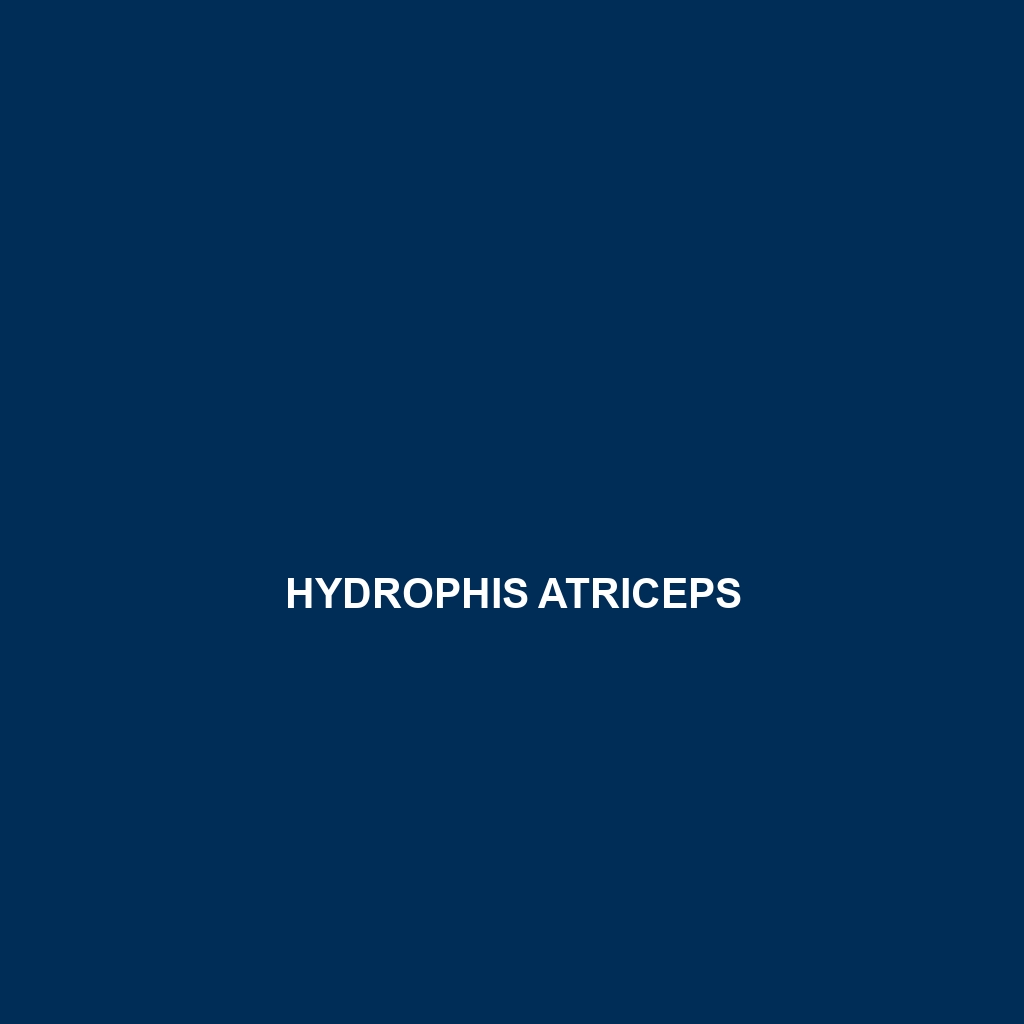Common Name
Hydrophis atriceps
Scientific Name
Hydrophis atriceps
Habitat
Hydrophis atriceps, commonly known as the Black-headed Sea Snake, is primarily found in the warm coastal waters of the Indian and Pacific Oceans. This marine species thrives in marine habitats, including coral reefs, estuaries, and shallow coastal waters. They can often be spotted around sandy substrates and rocky areas, which provide suitable environments for foraging and shelter. The climate of their habitat ranges from tropical to subtropical, typically characterized by warm temperatures and high humidity, ideal for these aquatic reptiles.
Physical Characteristics
Hydrophis atriceps exhibits striking physical characteristics that set it apart from other sea snakes. Adult individuals typically reach lengths of about 1.2 to 1.5 meters (approximately 4 to 5 feet). The most distinctive feature is its black head, which contrasts sharply with the lighter shades of blue or gray that dominate the rest of its elongated body. This coloration serves as a form of camouflage against predators and prey. Additionally, the snake’s paddle-shaped tail helps facilitate agile swimming, a crucial adaptation for life in the water.
Behavior
In terms of behavior, Hydrophis atriceps is primarily diurnal, being most active during the day. This species exhibits fascinating social interactions, especially during the mating season, where males can be seen engaging in combat for female attention—a behavior known as “male-male combat.” They are not known for extensive migratory patterns but may relocate to different feeding grounds based on prey availability. Interestingly, they are also known to be highly opportunistic feeders, often foraging near the surface of the water and occasionally basking on beaches in warmer months.
Diet
Hydrophis atriceps is a carnivore, primarily feeding on fish and other small marine creatures. Their diet mainly consists of fish species that inhabit coral reefs, making them effective hunters in these environments. Their feeding strategy relies on stealth and quick strikes, utilizing their excellent vision and chemical detection systems to locate prey. Unlike some other reptilian species, they do not primarily hunt from the ocean floor but rather pursue their prey through the water column, making them agile hunters.
Reproduction
The reproductive cycle of Hydrophis atriceps is characterized by ovoviviparity, meaning that the female gives birth to live young rather than laying eggs. Mating typically occurs during the warmer months, with a gestation period of about 6 to 8 months. Females can produce several offspring at a time, with each litter comprising between 6 to 14 baby snakes. The young are fully developed at birth and are independent, swimming away from their mother to seek food and shelter almost immediately.
Conservation Status
As of current assessments, Hydrophis atriceps holds a conservation status of “Least Concern” according to the IUCN Red List. However, their populations face threats from habitat destruction, pollution, and climate change. Coral reef degradation poses a significant risk to their environment and food sources. Conservation efforts are essential in preserving their marine habitats, and marine protected areas have proven beneficial in safeguarding populations from overfishing and habitat loss.
Interesting Facts
One particularly interesting fact about Hydrophis atriceps is its ability to tolerate saltwater effectively, which is essential for its survival in marine environments. Unlike many other reptiles, this sea snake has special glands that help excrete excess salt from its body. In addition to that, Hydrophis atriceps possesses a unique ability to stay submerged for extended periods, often remaining underwater for an hour or more while hunting or evading predators.
Role in Ecosystem
Hydrophis atriceps plays a critical role in the marine ecosystem as both predator and prey. As a predator, it helps regulate fish populations, contributing to the ecological balance within its habitat. Additionally, its presence indicates a healthy marine environment, as well-nurtured populations of such sea snakes reflect robust fish communities. Furthermore, they serve as prey for larger marine animals, including sharks and seabirds, thus playing a fundamental role in the marine food web.
